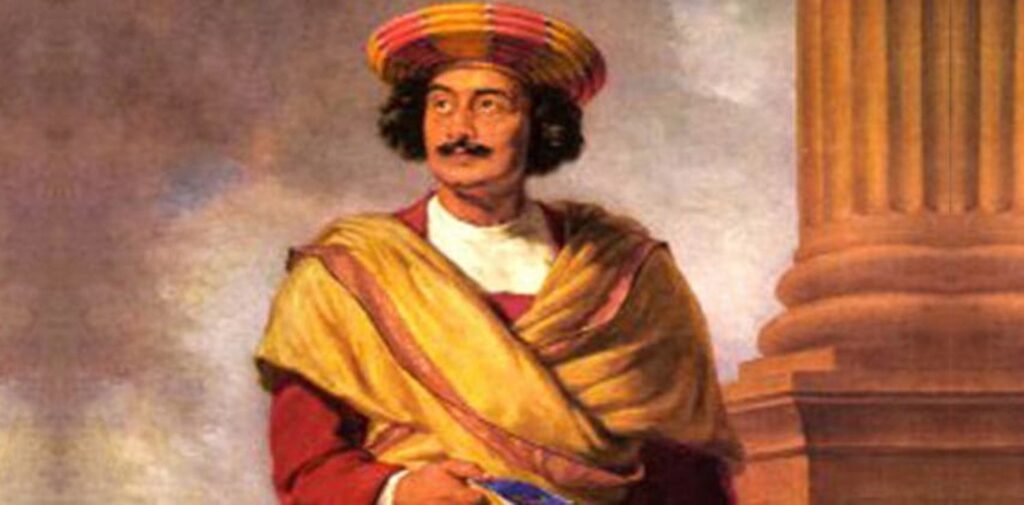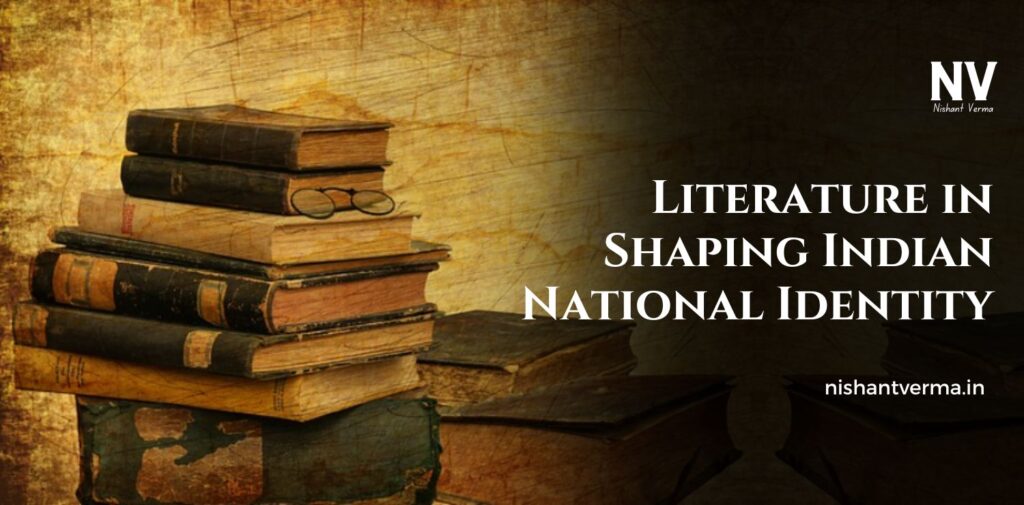India’s struggle for independence from British colonial rule was not just fought on the battlefield or in the political arenas; it was also deeply rooted in the hearts and minds of the people. One of the most powerful tools that helped shape Indian national identity during this period was literature. Writers, poets, and intellectuals played a crucial role in awakening the masses and uniting people across the country through their works. Literature was used not only as a means of expression but as a tool to spread nationalist ideas, create awareness about colonial oppression, and inspire the masses to join the fight for freedom.
This article explores how literature shaped Indian national identity, influenced the independence movement, and helped develop a sense of unity and pride among Indians from different regions, languages, and cultures.
Literature as a Tool for Political Awakening
India’s long struggle against British rule was not just about military resistance; it was also about cultivating a sense of national consciousness. This consciousness was built gradually, and one of the most significant ways it was nurtured was through literature. Writers used the power of the written word to awaken political awareness and educate the public about their rights and the injustices they faced under British rule.
In the 19th century, many intellectuals and writers began to criticize British policies and the social and economic exploitation of India. These writers understood that the key to a successful nationalist movement lay in creating a sense of unity among Indians, regardless of their language, religion, or region.

Raja Ram Mohan Roy and Social Reforms
One of the earliest examples of literature shaping national identity came through social reformers like Raja Ram Mohan Roy. Although not directly part of the freedom movement, his writings laid the groundwork for it. Roy’s work, including his journal Sambad Kaumudi, aimed to promote social and cultural reforms in India. He spoke out against practices like Sati (the burning of widows) and child marriage, advocating for rational thought, modern education, and social justice.
By calling for reforms and using literature to challenge outdated social norms, Raja Ram Mohan Roy influenced the rise of a new generation of Indians who would later become involved in the freedom struggle. His efforts were part of a larger movement to strengthen Indian culture and identity in the face of colonial domination.
The Role of Vernacular Literature
The spread of nationalist ideas through literature was not limited to English or elite circles. A crucial element in shaping the national identity was the emergence of vernacular literature, written in regional languages like Bengali, Hindi, Tamil, Marathi, and others. These languages resonated deeply with the common people, who were often excluded from the English-speaking nationalist discourse.
Bengali Literature and the Rise of Nationalism
In Bengal, literature played a central role in spreading nationalist sentiments. Writers like Bankim Chandra Chattopadhyay and Rabindranath Tagore were instrumental in shaping the national identity of India. Bankim Chandra’s novel Anandamath (1882) introduced the famous patriotic song “Vande Mataram,” which would later become a rallying cry for the independence movement. The novel portrayed the story of the struggle against British oppression and inspired many to believe in the possibility of an independent India.
Rabindranath Tagore, who became the first non-European to win the Nobel Prize in Literature in 1913, also used his poetry and songs to shape India’s national consciousness. His poem Jan Gan Man, which later became the national anthem of India, reflected the unity and diversity of the country. Tagore’s works expressed the deep emotional connection between the people of India and their land, and they instilled pride and hope in the hearts of millions.

Hindi Literature and the Freedom Movement
In the Hindi-speaking regions, writers like Makhanlal Chaturvedi, Suryakant Tripathi Nirala, and Premchand played an essential role in inspiring the people. Premchand, in particular, used his short stories and novels to portray the struggles of ordinary people under British rule and the need for social justice. His work, such as Godan (1936), highlighted the plight of the poor and the exploited, bringing attention to the need for unity and resistance against both the British and the traditional caste-based oppression.
Through their powerful words, these writers reached people in villages and towns, spreading nationalist ideas and encouraging them to take action for their country’s freedom.
Literature as a Source of National Pride
During the colonial period, one of the primary goals of nationalist literature was to restore pride in India’s cultural heritage. British colonialists often portrayed India as backward, uncivilized, and in need of British rule to bring “civilization.” In response, Indian writers used literature to highlight the richness of India’s culture, history, and traditions. This created a sense of pride in India’s past and encouraged the people to assert their identity in the face of colonial oppression.
The Revival of Indian Mythology and History
Writers like Bankim Chandra Chattopadhyay and Kavi Pradeep revived ancient Indian mythology and history in their works. Anandamath, as mentioned earlier, drew inspiration from India’s glorious past and the mythological story of Mother India. Similarly, writers began to celebrate the history of India’s ancient rulers, saints, and scholars, reminding people of their glorious heritage.
By highlighting India’s cultural achievements, these writers encouraged the idea that India had a rich, independent identity long before British rule, and that this heritage should be respected and preserved.

Poetry and Songs of Nationalism
Poetry and songs were some of the most effective ways of uniting people during the independence movement. Poets like Subhadra Kumari Chauhan, who wrote Veer Marri Chunmun, and others used their poetry to inspire a sense of unity and pride. The use of songs like “Vande Mataram” and “Saare Jahan Se Achha” became central to the movement, uniting people from all walks of life and across regions.
The Role of Literature in the Modern Struggle for Independence
The influence of literature in shaping Indian national identity was especially evident during the 20th century, as the country moved closer to independence. Nationalist leaders like Mahatma Gandhi, Jawaharlal Nehru, and Subhas Chandra Bose recognized the power of literature in inspiring the masses and used it to further the cause of freedom.
Mahatma Gandhi’s Influence
Mahatma Gandhi was not only a political leader but also a writer and an advocate of simple living and self-reliance. His magazine Young India was a platform where he wrote about the importance of non-violent resistance and self-sufficiency. Gandhi’s philosophy of Swaraj (self-rule) and Ahimsa (non-violence) was spread through his writings, which reached people across India, even in the most remote areas. He also used literature to encourage Indians to boycott British goods and reject Western values.
The Role of Newspapers and Magazines
The Indian press was a powerful tool in the hands of nationalists, and many newspapers and magazines became important platforms for expressing nationalist sentiments. Publications like Kesari, Amrita Bazar Patrika, and The Hindu provided space for discussions on British exploitation and the need for self-rule. They helped shape public opinion and encouraged Indians to unite against British rule.
Literature and the Freedom Struggle
Throughout the independence movement, literature continued to play a central role in the struggle for freedom. Writers, poets, and intellectuals used their works to mobilize the masses, create awareness, and ignite the flame of nationalism. The ability of literature to reach people across India, transcending regional, linguistic, and cultural barriers, made it one of the most effective tools in the fight for independence.
Conclusion: Indian National Identity
Literature played an essential and powerful role in shaping Indian national identity during the colonial period. It was a tool for political awakening, social reform, and cultural revival. Writers and poets inspired Indians to take pride in their heritage, unite in their fight for freedom, and challenge the colonial system. From the works of early social reformers like Raja Ram Mohan Roy to the radical writings of the 20th-century nationalists, literature became a critical weapon in the struggle for independence.
Today, literature continues to be an important part of India’s identity, helping to preserve the country’s diverse cultural heritage while also inspiring future generations.




